Living, Working & Warfare
Agriculture
Agriculture in Israel was the most important source of income, just as in other countries in the ancient Near East. There were, however, significant differences in terrain type and climate. Not all regions were as suitable for growing crops, because there was little rainfall for a large proportion of the year. In those areas livestock farming
Agriculture, Livestock and Fisheries
Agriculture, livestock and fisheries were important ways of earning a living in Ancient Israel.
Read more about these in the following topics:
Armour
When armour is mentioned in the Bible, this does not refer to a suit of armour that covers the entire body. Armour in the Bible is a cuirass or scale armour.
Army
In the Old Testament, occasionally there is talk of an Israelite army. In the New Testament we read mainly of Roman soldiers and army units.
Baking Plate
A baking plate was a round plate made of pottery
Ban
“The ban” is a religious term that is often used in stories about wars, meaning that people or things are devoted to God.
Banner
A banner or standard was a flag or a metal board on a long pole. A banner was carried by the army and served to identify a group of soldiers.
Battering Ram
Battering rams were used when laying siege to a city. They were intended to make holes in the city wall or to smash the city gates. The Assyrians were the first to use battering rams. This made them very successful in sieges.
Battle
Battles usually took place between two armies in an open field. The army was normally split into a number of subdivisions in order to attack the opponent from different sides.
Battle Axe
A battle axe was a close combat weapon that was used by foot soldiers. It consisted of a wooden handle of around 30 inches (about 76 cm) in length and one or two semi-circular blades attached to the end of the handle.
Bow and Arrow
A bow and arrow was a commonly used weapon in ancient times. It was a light weapon and therefore easy to carry. An added advantage was that you could hit the enemy from a distance.
Bread Oven
Bread was baked on a griddle
Bronze
Bronze is a strong and hard metal which is made by mixing two relatively soft metals: copper and tin, or instead of tin, another metal such as lead.
Byssus
Byssus is a term for a woven material. It is linen of the highest quality. The more thinly woven the material, the more costly the final product.
Chariot
The chariot was an open wagon with two wheels at the back and a platform that three soldiers could stand on. One drove the wagon, one had a bow and arrow or a spear with which to attack the enemy, and the third protected the other two with a shield.
City Gate
The city gate was the entrance to the city. The gate was part of the city wall
A city gate usually consisted of several areas. In the time of the kings, there were usually two or three spaces on either side of the wall.
In front of the city gate there was often a second, outer gate.
City Wall
Already in the Bronze Age, before the time of the kings, many Canaanite cities were fortified with city walls and gates. Many of these cities remained in use in the Iron Age as well, in the time of the kingdoms of Israel and Judah.
Cloth (Production)
The production of fabric for clothing was generally the task of women. In Proverbs 31:19
Spinning and weaving were mostly done at home. But 2 Kings 23:7
There were also men who wove and worked on cloth, for example, cloth for the decoration of the tabernacle
Club
A club or a battle axe was a hand weapon that could be used by foot soldiers. It consisted of a short wooden handle to which a heavy head of stone or metal was attached. The handle was often widest at the bottom, tapering towards the head, or it was bent to afford the user a better grip.
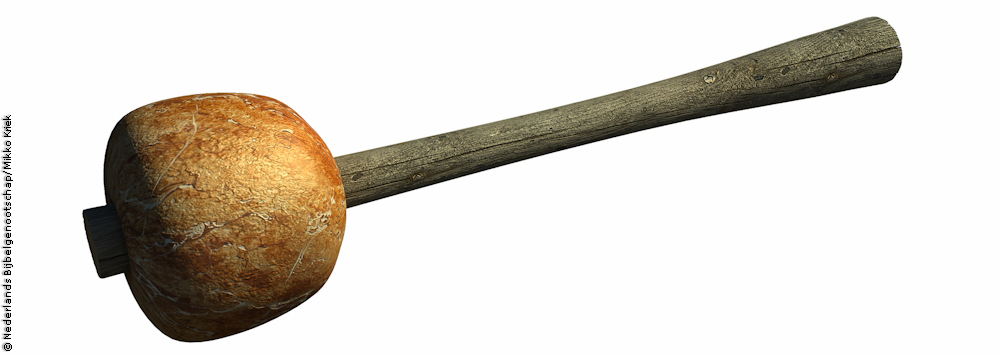
club
A club or a battle axe was a hand weapon that could be used by foot soldiers.
Cooking Pot
Cooking pots were used to boil water or cook food. They were deep pots made of earthenware or metal, such as bronze or copper.
The cooking pot could be hung above the fire by a rope, or be placed on stones positioned around the fire. The cooking pot could also be placed at the round opening of a bread oven
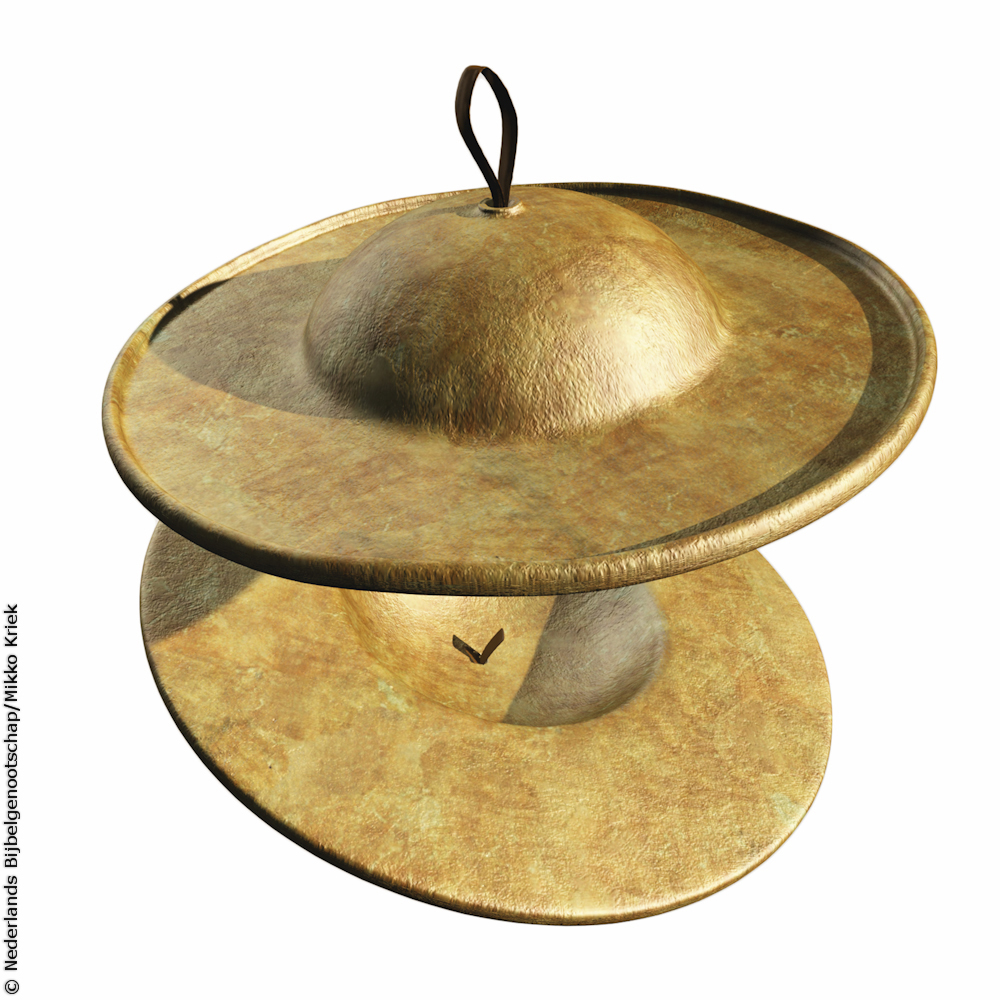
cymbal
A cymbal consisted of two bronze plates, the cymbals themselves. The hands of the musician had to slip under a cord, so that they could hold the cymbals firmly.
Cymbal
A cymbal is a percussion instrument. Out of all the percussion instruments, it was chiefly the cymbals which were often used in the temple.
Dining Table
In Old Testament times, ordinary people did not tend to use a table. They normally sat on a straw mat or an animal skin on the floor. People sat or reclined around it.
Wealthier people often did have a table, for example the Canaanite ruler Adonibezek in Judges 1:7
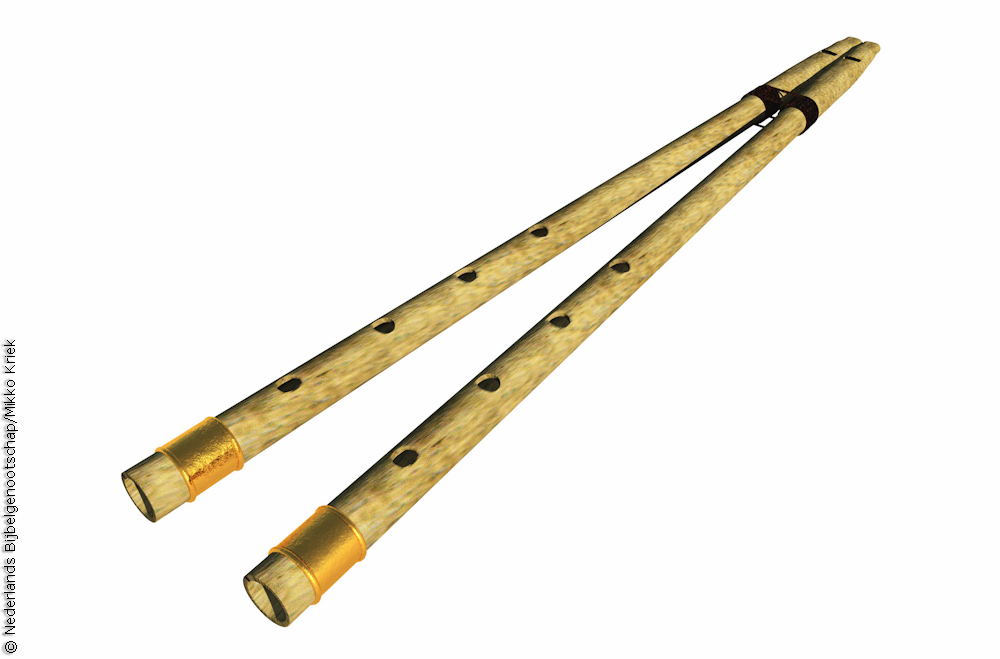
double flute
A double flute could be made out of bone, metal, or wood, and it had a reed. This instrument can be seen as the forerunner of the modern oboe or clarinet.
Drum
A drum is a percussion instrument. It was not often used in and around the Temple, but rather was often used for processions and celebrations. The Hebrew word for drum is toph.
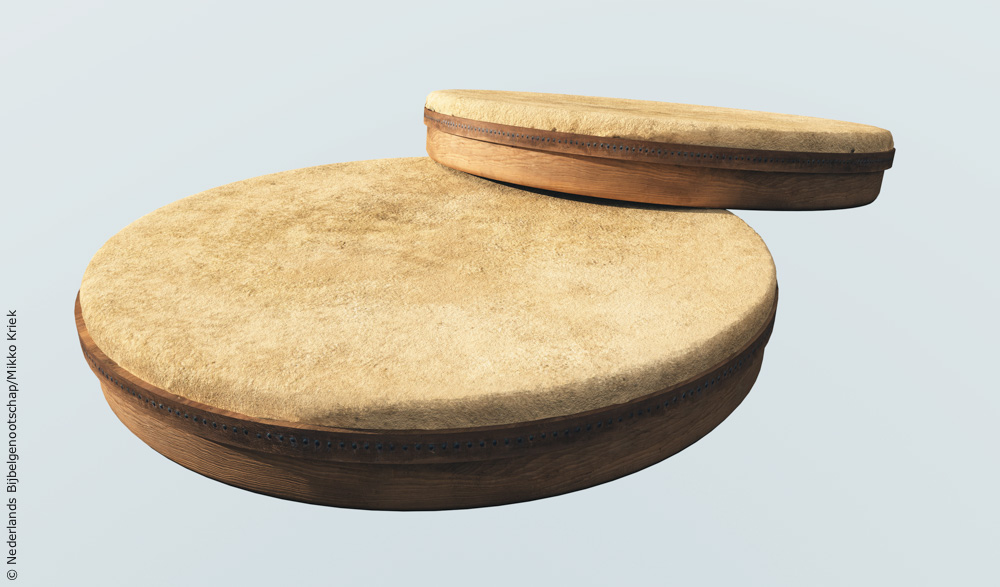
Drum
A drum is made from the hide of an animal, which is stretched out over a wooden frame. The drum was held in one hand and struck with the other.
Dyeing
Wool and flax were the most commonly used materials for making cloth. The natural colour of flax, from which linen was made, was greyish white. Linen was not generally dyed, but bleached to give it a brighter whiteness.
Wool can have various natural colours, varying from white to dark brown and black. If people wanted materials to have a different colour, the wool could be dyed. There are also indications that in Mesopotamia materials were dyed already in the third millennium.
Earthenware
Earthenware was used frequently in the ancient Middle East. It was cheap and relatively easy to work with. Pots, pans, plates and jugs are just some examples of the end products, but there were also oil lamps
Fishing Boat
Boats were used when fishing
Fishing boat with casting net
A casting net was a round net, about five to seven meters in circumference, with a rope in the center and lead weights around the outside. The fisherman on the beach or in the boat held on to the rope and threw the net into the water with a circular motion. The act of throwing caused the net to fan out and it fell like a kind of parachute onto the lake. The weights ensured it sank to the bottom. The fisherman would then pull the rope, closing the net like a bag, and draw the full net into the boat.
fishing boat with drag net
A drag net was a large net, around three hundred meters in length. At the ends it was three to four meters in height, and in the middle about eight meters. In the water, the bottom of the net was pulled down with lead weights, while the top was held up with cork floats. On either side, the net tapered to a point, with ropes attached.
To spread out the drag net, half of the crew would sail out onto the lake or the sea, while the other half stayed on the beach and held the end of one of the ropes. The boat kept moving further out onto the lake until the net was taut. Then the boat would sail back to the shore in a wide arc. Next, the fishermen on the beach pulled the net full of fish ashore. The net could also be pulled up into the boat.
Fishing in the Time of Jesus
In the area where Jesus lived and worked — around the Lake of Galilee — fishing was an important source of income for many people. Jesus’ disciples were fishermen, for instance. Archaeological data and information from the New Testament allow us to form a good picture of fishing in the time of Jesus.
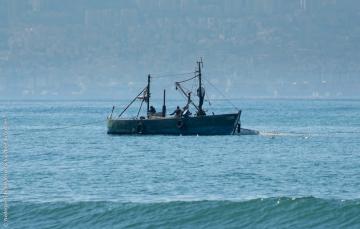
Fishing Net
In the time of Jesus, the most important method of fishing was with a net. This could be in three different ways: with a drag net, a casting net or a trap.
Flute
Various wind instruments occur in the Bible. These instruments were used to warn people or summon them together, though they were also used to make music in the Temple.
Goats and Sheep
The landscape and climate of Israel were eminently suitable for goat herding. Goats mainly eat leaves and foliage and can therefore survive in dry and desert-like areas where there is not much grass. They are also very good at navigating rocky terrain.
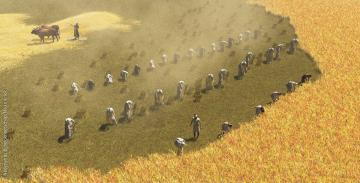
Grain Harvest
In biblical times, wheat and barley were the most important crops in Israel. The spring and early summer were the time of harvest. The barley was the first to ripen, already in April. The wheat followed a few weeks later, in June.
Greaves
According to 1 Samuel 17:6
Harp
The harp belongs to the family of stringed instruments. It is mentioned in the Bible nearly always in conjunction with a lyre, as in 2 Samuel 6:5

harp
Probably a harp was an instrument with many strings: it had more strings than a lyre. The strings were made of sheep’s colons.
Helmet
The purpose of a helmet was to protect a soldier’s head during battle. Sometimes flaps were attached to the helmet to protect the ears and the neck. Many ordinary Israelite soldiers did not wear a helmet, but just tied a scarf around their heads.
Hezekiah’s Tunnel
2 Kings 20:20
Hoe
A hoe was used in agriculture to weed or to loosen the earth. A plow
House
In the Old Testament period the so-called four-room house
House in the New Testament
In New Testament times, houses were frequently built around a courtyard. These houses were often only one storey high. In cities there were often residential blocks, whereas out in the countryside houses were detached. Richer people would have a villa built that was inspired by Roman building conventions.
House in the Old Testament
In the period up to the Babylonian exile, the so-called four-room house was the most common type of house in Israel and Judah. This type of house was found in villages as well as the cities, though houses in the countryside tended to be larger than those in the cities. Archaeologists think that city dwellings were occupied by a single family, while houses in the countryside were occupied by several families from a single clan.
Housekeeping
Important utensils in and around the house were:
Leaven
Leaven (or yeast) is old (sour) dough that was used to help new dough to rise.
Linen
In the Bible, linen mainly features as material for priestly garments

